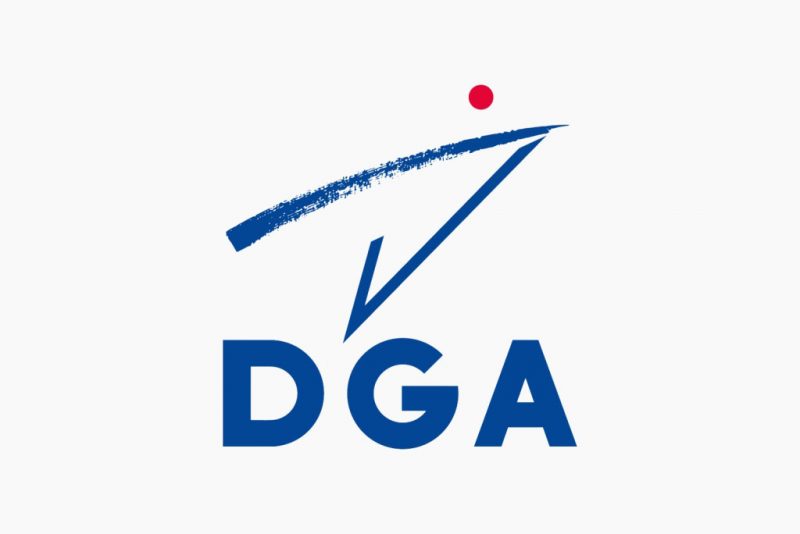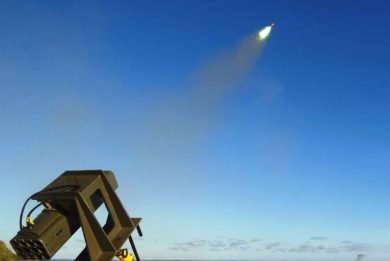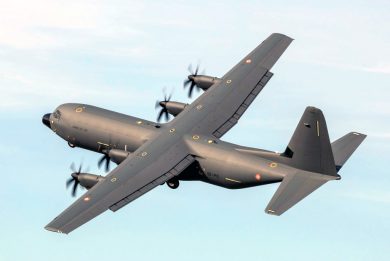France: defence programmes and challenges, the DGA view
By Paolo Valpolini
In late October the French General Armaments Director, Joël Barre, illustrated during a press conference the DGA (Délégation Générale de l’Armement) activities in 2020. He touched on numerous issues ranging from the support to the French defence industry in time of crisis and on the protection of the national defence technology and industrial base, to ongoing programmes, both at national and international level.
“During the current crisis we continued to operate. Last spring we put in place a continuity plan, in June we put into place a plan aiming at progressively recovering our activities, and I can affirm that nowadays we are at a normal level of activity notwithstanding the crisis and the strict respect of the measures that we must keep,” Mr. Barre said in his opening remarks underlining that the DGA and the Ministry of the Armed Forces are respecting the 2019-25 Military Programming Law (LPM 19-25) in terms of budget and deliveries, the crisis having generated 2-3 months delays on some activities that will be recovered within 2021.

To better respond to Forces’ needs the DGA and the Forces joined their teams in order to better prepare and conduct defence acquisition programmes, looking at capabilities rather than at single systems.
Defending the industrial base
“Equipping the Armed Forces is not enough,” Barre stated, “France aims at doing it in a sovereign way, therefore we must ensure the sustainability of our technological and industrial defence capability (BTID, Base Technologique et Industrielle de Défense). Today our defence industry is formed of 10 major groups and over 4,000 enterprises of different sizes, with 200,000 working places on all the French territory, that is 4% of the overall national workforce, and generate an yearly turnover of 22 billion Euro, considering both national and export markets.” In 2020 the BTID was challenged both by the COVID crisis and by potential foreign investments. COVID affected industries of all sizes but mostly SMEs (Small and Medium Enterprises): “In April-May we set up a Task Force for safeguarding our BITD, formed by around 100 people within the DGA taken from our SDIE (Service D’Intelligence Economique, economic intelligence service), our technical centres, our quality assurance centre, and this task force, together with the main industrial groups, the CIDEF (Conseil des Industries de DEFense, the defence industries council) and the professional groups representing land, naval and aviation industries, GICAT, GICAN and GIFAS, are analysing the problem and set the support measures,” the DGA explains. In mid-October the Task Force had met over 1,000 companies, some 10% of them needing remediation actions, carried out mostly in the form of payment acceleration to solve treasury problems, anticipation of already scheduled orders, or even new unscheduled orders when a need was there. “We also helped them in obtaining loans, either from the State or from banks, and over the around 120 companies that needed remediation actions we consider that nowadays we dealt with 80 of them, while of course we prosecute this programme of consolidation and help to our defence industry” Barre says. A number of financial instruments are in place in France to support the defence industry, among which Definvest fund, recently increased from 50 to 100 million Euro per year, aimed at key defence industries, while a new fund, Definom, with a 200 million capacity, is to be launched at the incoming Defence Innovation Forum, planned for November 19th to 21st, mostly aimed at start-ups and innovative enterprises which develop dual-use technologies. Small defence companies can also access to the French Tech acceleration fund put into place by the Ministry for the Economy and Finance, all those funds being managed and coordinated by BPI France (Banque Publique d’Investissement, public investment bank). Besides being used to cope with the current crisis, these funds were mainly created to support innovation.

As for the defence against aggressive acquisitions from outside France, Mr. Barre underlined that above a certain percent any foreign actor who intends investing in a French defence company is subject to an authorisation by the Ministry for the Economy and Finance, which works with the DGA, and to obtain it he must agree to conditions that include among others the sustainability of the industrial capability and of the know how, the maintain of the R&D capacity, and so on. In recent times, to respond to the crisis, the limit that triggers the need for the authorisation, which had already been reduced from 33 to 25%, was further educed to 10% of the company capital. Currently three French strategic companies are in the sight of foreign investors: Aubert & Duval, active in superalloys, CILAS, specialised in lasers and optics, and Photonis, which provides image intensification tubes and CMOS sensors for night vision equipment.
Current French programmes status
Among the measures taken to cope with the crisis, last June the French Government put in place the Aeronautical Support Plan, which for the Ministry of the Armed Forces represents an anticipation of aviation orders of around 600 million Euro, and this brings to talk about programmes, the first being that for three additional A330 MRTT tanker-transport aircraft. “The two first A330 were already delivered, as they were new unsold aircraft that were produced prior the crisis, while the third one is a new aircraft being manufactured,” the DGA says, adding that “We are buying them in standard A330 configuration, and they will remain so until they will be transformed in MRTT aircraft around 2026, as scheduled in the LPM, raising our MRTT force to 15 aircraft according to our Force Model 2030.” Among anticipated orders we also find an additional light surveillance and reconnaissance aircraft, eight Caracal helicopters that will replace the Air Force Pumas, Navy drones such as SDAM (Système de Drone Aérien de la Marine) and SMDM (Système de Mini-Drone Marine), helicopters for the Gendarmerie and the Civil Security adding further 200 million Euro.
Remaining within French acquisition plans, Mr. Barre provided some updates also on some other defence programmes. “We concluded the draft study of the new generation aircraft carrier a few weeks ago, and we submitted it to our political authorities that should take a decision, to allow us to launch its development. I can just tell you that it will be slightly larger than the Charles de Gaulle, simply because the FCAS aircraft she will operate is bigger than the current Rafale,” Barre elaborated.
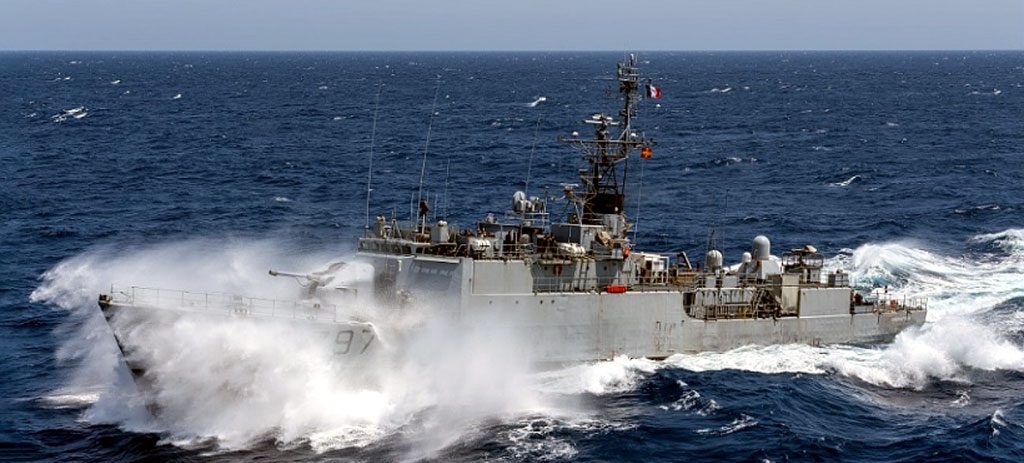
Remaining in the naval field he also confirmed that the preparatory phase of the Ocean Patrol Vessels programme involves Naval Group as well as Socarenam, Piriou and CMN shipyards, “in order to put together the different competencies, and at a later date, when we will launch the production phase in 2022 or 2023, we will see which industrial organisation will be retained,” he said.
Asked on space issues, France is working on a programme known as Successeur GRAVES that will replace the current radar-based GRAVES (Grand Réseau Adapté à la VEille Spatiale) observation system that dates of the 1990s. “We also have an ongoing feasibility study, together with the CNES (Centre National d’Etudes Spatiales), for a micro-satellite named Ioda that aims at developing and testing in orbit the technologies for a patrolling satellite,” If successful the DGA intends to launch the programme around 2023.

Switching to the Army and talking about drones, “We delivered a first batch of SMDR (Spy Ranger Mini-Drone) which is now in the technical-operational evaluation phase drone. I confirm that we had some delays in our drone programmes due to technical and industrial difficulties, which are however being solved and I consider that within 2021 these will be overcome,” the DGA admitted. Talking on Safran Patroller, he said that the problem that led to the crash in December 2019 has been identified and will be corrected; “This caused some delays in the delivery of the SDT (Système de Drone Terrestre), the first systems to be delivered for experimentation in summer 2021.”
Bi- multi- and European cooperation
A major drone programme is the Euromale, which brings us in the international cooperation arena, as it involves also Germany Italy and Spain. “We are intensely working to start this programme, but we have still to solve some punctual issues in order to take a decision before year-end,” Barre announces, underlying that the Euromale, “Which will replace the US-made Reaper in the French inventory, will be fitted with state-of-the art sensors that will be available in time to fit with the planned in-service date which is planned for 2028.”
Germany is a major partner for France; “In the coming weeks we will start the preparatory study of the future maritime patrol system with our German friends, what we call MAWS (Maritime Airborne Warfare System),” which will succeed the French ATL 2 flying with the Naval Aviation.
“The first feasibility study will be aimed at mission systems as we want to adopt a capability approach, and in the coming weeks it will be assigned to Thales in France and a to consortium formed by Thales Deutschland, Hensoldt and Diehl in Germany.” The two nations already agreed that the MAWS will be based on a European platform, and the two providers, Dassault and Airbus, will be involved in the programme probably since early 2021.
Two more programmes see France and Germany operating in partnership, the MGCS (Main Ground Combat System) the future main battle tank, and the FCAS, both already launched, the latter involving also Spain. Two other bilateral programmes well underway are the MMCM (Maritime Mine Counter Measures), based on naval drones, developed with the United Kingdom; “We finished the test phase and we are now about to start production,” Barre announced. The other major cooperation programmes are the SAMPT NG (Sol-Air Moyenne-Portée/Terrestre Nouvelle Génération) with Italy in the air/ballistic missile defence area, and CAMO (Capacité Motorisée) with Belgium related to Scorpion armoured vehicles, and the CSO (Composante Spatiale Optique) observation satellite, which already involves three partner nations; “We launched the first satellite in late 2018, and we will soon launch the second one, when the launch rocket will become available,” Mr. Barre said.
While all these programmes were started as bi- or multi-lateral cooperation, Mr. Barre looks at cooperation at a wider European level. “The latter is gaining momentum, in the form of the European Defence Fund (EDF), in which we already obtained funding for what is called EDIDP (European Defence Industrial Development Programme),” he said. He also underlined that France, which is taking part in over a dozen programmes, obtained a 24% industrial participation, considerably higher than the French contribution to the European GDP, which is around 15-16%. “It is important that we continue playing the role of the locomotive of the European defence cooperation, both on the bi- multi-lateral side as well as in the European Community dimension.”
A key issue is producing ITAR-free equipment, and to this end France systematically requires to its industries such a label, whenever and wherever possible. “We are stimulating the search for alternative components in France and in Europe, and within the preparation of the EDF we proposed to our partners a programme aiming at developing in Europe some key critical components for which we are currently wholly depending from the United States or other non-European providers,” the French DGA says.
A look to the Future
To prepare the future Mr. Joël Barre considers as a first key element the new capability approach adopted by the DGA. “As I already mentioned, the DGA teams in charge of some programmes work now hand in hand with the Forces counterparts, this system being in place since about 18 months. Teams of such kind are currently working i.e. on FCAS programme, the Scorpion land programme, and on the future carrier battle group, made of the next generation aircraft carrier and all the elements that will sail around her,” Barre explains. To optimise their work they have at their disposal digital simulation systems, and will soon have secure connections that will link them with the main industrial groups and the DGA technical centres deployed around France, “these IT secured lines of communication being made available according to the needs starting from early 2021.” The second main aspect is innovation, for which a budgetary effort is a key element; “We are following the LPM 19-25 path, aiming at 1 billion Euro per year in 2022, this R&D budget allowing us to prepare future programmes, and to carry out exploratory research in connection with Academia, high schools and research centres.”
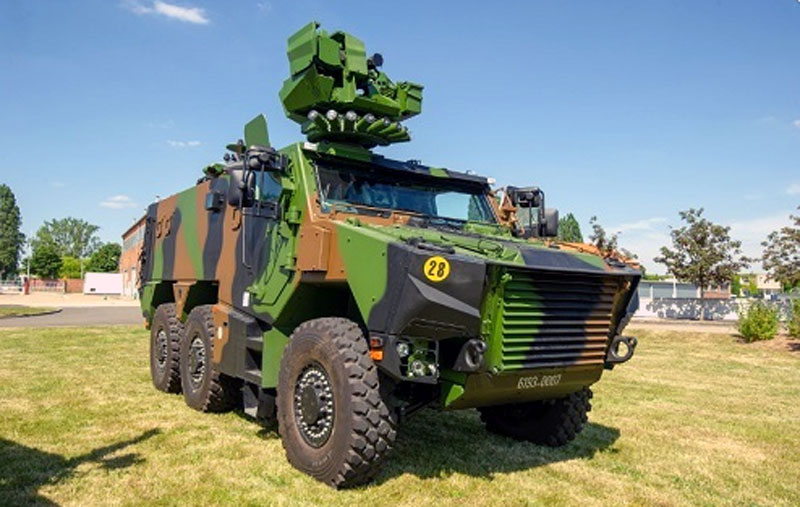
The DGA also aims at picking up innovations emerging from the civil sector, which is one of the main missions of the Agence de l’Innovation de Défense (AID). On the other hand it also aims at working on breaking innovation programmes; “We started the development of the hypersonic test vehicle, we are intensively working on counter-drone systems, as well as on directed energy weapons such laser or others,” Barre says. Innovation also means the development of new functional tools such as the Defence Lab, as well as supporting innovative ideas coming from the field. To avoid a Paris-centric structure, since the creation of the AID regional clusters formed around DGA’s technical centres were developed know as Pôles Innovation. Six of them are currently existing: Gimnote (naval, Toulon), Orion (naval, Brest), Ginco NRBC (CBRN, south of Paris), Lahitolle (land, Bourges), Alienor (aerospace, Bordeaux) and CiAile (airmobility, Toulouse). As for those SMEs and start-ups that usually tend to operate thinking out of the box, the aforementioned funds, such as Definvest and Definom have been or are being put in place.
Photos courtesy French Ministry of the Armed Forces

